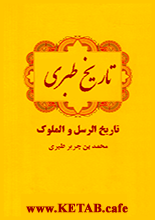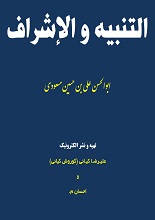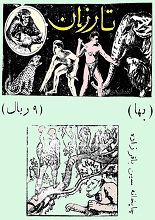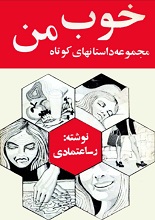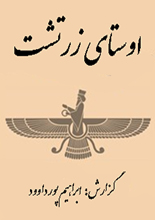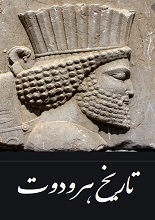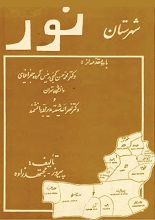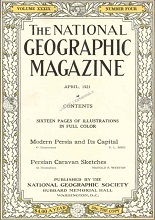Few books in the history of medicine have achieved the legendary status of Gray’s Anatomy. First published in 1858, this monumental work by Henry Gray has stood the test of time for more than a century and a half. It remains the ultimate reference for understanding the structure of the human body — a book that transformed anatomy from a mysterious, complex subject into a precise and visual science.
From medical schools and hospitals to libraries and research centers, Gray’s Anatomy continues to be regarded as the definitive guide for students, doctors, and anyone interested in the intricate architecture of the human body.
The Birth of a Scientific Revolution
The mid-19th century was a period of dramatic scientific discovery. However, knowledge about human anatomy was scattered and inconsistent. Medical students depended on outdated, disorganized manuscripts that lacked accurate illustrations.
In this context, Henry Gray, a young British anatomist, set out to create something revolutionary — a complete, systematic, and accessible guide to human anatomy. Working with Henry Vandyke Carter, a gifted medical illustrator, Gray spent years dissecting and studying human cadavers to produce a text of unmatched precision.
In 1858, their masterpiece was published in London under the title Gray’s Anatomy: Descriptive and Surgical. The book instantly became an academic sensation. Within a year, it had sold out its first edition and began being used in medical schools across Europe and the United States.
Henry Gray – The Visionary Behind the Book
Henry Gray (1827–1861) was born in London and showed early talent in medical studies. By the age of 25, he had become a Fellow of the Royal College of Surgeons and was already known for his dedication to anatomical research.
Gray was driven by a powerful idea — that anatomy should be understood not merely as a descriptive science but as a foundation for surgery and medicine. To make that possible, he combined clear explanations with detailed, scientifically accurate illustrations by Carter.
Tragically, Gray’s promising life was cut short at the age of 34 when he contracted smallpox. Yet, his work had already changed medical education forever. His name lives on through Gray’s Anatomy, a book that continues to evolve with every generation of doctors.
Structure and Organization of Gray’s Anatomy
Over the decades, Gray’s Anatomy has been revised, expanded, and updated through more than 42 editions, but its structure remains rooted in the principles Henry Gray established. The book is organized systematically, covering the body region by region and system by system.
Here’s a brief overview of its major divisions:
- General Anatomy: The foundation of the human body, including cells, tissues, and fundamental principles of structure and function.
- Skeletal System: A comprehensive study of bones and joints, explaining their shapes, connections, and mechanical roles.
- Muscular System: Detailed descriptions of each muscle, its origin, insertion, action, and innervation.
- Nervous System: From the brain and spinal cord to peripheral nerves — the control center of the human body.
- Cardiovascular System: The structure and operation of the heart, arteries, and veins that maintain circulation.
- Respiratory and Digestive Systems: Organs that sustain life — lungs, trachea, stomach, intestines, liver, and pancreas.
- Urogenital System: The reproductive and urinary systems, explaining both anatomy and clinical relevance.
- Microscopic and Functional Anatomy: Cellular-level insights integrated with imaging technologies like MRI and CT scans in modern editions.
Each chapter is paired with precise illustrations — over 2,000 in the latest editions — that visually reinforce the written explanations.
The Power of Visual Learning
One of the greatest strengths of Gray’s Anatomy lies in its illustrations. Henry Vandyke Carter’s original drawings are masterpieces of scientific art, admired even outside the medical community. His ability to translate complex three-dimensional structures into accurate two-dimensional diagrams made anatomy more approachable and easier to comprehend.
Modern editions of Gray’s Anatomy continue this legacy with high-resolution color images, 3D scans, and digital renderings, ensuring the book remains relevant in an era dominated by technology.
Educational Importance in Medicine
For over 160 years, Gray’s Anatomy has been the cornerstone of medical education. Every medical student, at some point in their training, studies this book or one of its derivatives. It provides not only anatomical detail but also clinical context — connecting form with function and structure with disease.
Unlike many technical texts, Gray’s Anatomy balances scientific rigor with readability. Its clear explanations and logical flow make it suitable for both beginners and professionals. Many teachers describe it as “the voice of anatomy itself.”
Even today, many universities still list Gray’s Anatomy among their essential textbooks. And although digital platforms, videos, and virtual dissection tools have emerged, this book remains irreplaceable as a reference.
Evolution Through Editions
Since its first publication, Gray’s Anatomy has never stopped evolving. Each edition builds upon previous ones, incorporating discoveries in physiology, imaging, and molecular biology.
The 42nd edition, published by Elsevier, represents the modern face of the book — a fusion of classical anatomy and modern science. It features updated sections on neuroanatomy, clinical correlations, radiological anatomy, and embryology.
The editors of recent editions include a global team of specialists from leading universities, ensuring that the content reflects the latest research and terminology used worldwide.
This continuous evolution is one of the reasons Gray’s Anatomy has maintained its position as the most authoritative anatomy text ever written.
Influence Beyond Medicine
The influence of Gray’s Anatomy extends far beyond medical education. Its impact reaches into art, design, and culture. Artists, sculptors, and illustrators have long used the book as a reference for mastering the proportions and mechanics of the human body.
Even popular culture has embraced it. The hit American TV series “Grey’s Anatomy”, which began airing in 2005, borrowed its title as a homage to the original book — symbolizing precision, humanity, and the drama of life and medicine.
Moreover, historians of science often cite Gray’s Anatomy as one of the milestones that marked the transition from descriptive to modern scientific medicine.
Why Read the Original English Edition?
Many readers around the world choose to study Gray’s Anatomy in its original English form — and for good reason. Medical terminology is rooted in English and Latin, and the nuances of meaning are best preserved in the original language.
Translations, while useful, sometimes simplify or omit crucial details due to linguistic limitations. Reading the English version helps students master the precise vocabulary used in international medical practice, research papers, and exams like the USMLE or PLAB.
Furthermore, the original text conveys the tone and clarity intended by Henry Gray himself — a blend of scientific accuracy and pedagogical compassion rarely matched by translations.
The Digital and Modern Versions
In recent years, Gray’s Anatomy has successfully transitioned into the digital age. Alongside its traditional hardcover editions, it is now available as PDF and eBook formats, as well as through the Elsevier Student Consult online platform.
Digital versions include interactive 3D anatomy models, video tutorials, and integrated clinical case studies. These innovations make it easier for students to visualize complex systems and connect theory with practice.
Despite technological progress, the printed book continues to hold special value. Many medical professionals still prefer the tactile experience of studying from a physical copy — the very way generations of doctors before them learned the art of anatomy.
همچنین بنگرید به کتابهای زیر:
آناتومی گری
آناتومی و مورفولوژی دندان
انسان موجود ناشناخته
فوائد گیاهخواری
Legacy and Enduring Relevance
Few works in scientific literature can claim such an enduring legacy. Gray’s Anatomy has been in continuous publication for over 165 years — a remarkable testament to its accuracy and educational value.
It bridges the past and the future: a 19th-century masterpiece that remains relevant in 21st-century medicine. Each new generation of students discovers in its pages the same fascination and respect for the human body that Henry Gray himself felt.
The book’s enduring presence also speaks to a universal truth — that understanding the human body is both a scientific and a deeply human endeavor.
Download Gray’s Anatomy PDF
Gray’s Anatomy is more than a medical textbook; it is a symbol of intellectual dedication and scientific excellence. It teaches not only anatomy but also precision, discipline, and the beauty of the human form.
To read it is to follow in the footsteps of countless physicians who shaped modern medicine. For anyone who seeks to understand how the human body works — from the smallest cell to the most complex organ system — this book remains the ultimate reference.
Even after more than a century, Gray’s Anatomy stands as the unquestioned authority on human anatomy — a timeless guide for the curious mind and the caring heart alike.
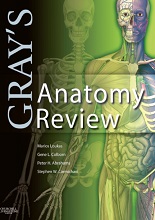
برای دانلود این کتاب، ابتدا باید عضو سایت بشوید.
پس از عضویت، لینک دانلود این کتاب و همهی کتابهای سایت برای شما فعال میشوند.
(قبلا عضو شدهاید؟ وارد شوید)
